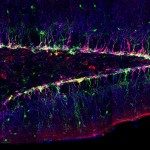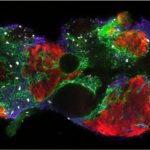About
“Brain, Barriers, and Behavior in Drosophila”
Abstract: Glial cells are an essential component required for the functionality of all complex nervous systems. In lower vertebrates and invertebrates, glial cells establish the blood-brain barrier and therefore establish the metabolic interface with the outside world. Next to metabolic support, glial cells guarantee ion homeostasis within the brain and are able to modulate synaptic functions by the regulation of neurotransmitter homeostasis. To decipher the molecular mechanisms underlying complex glial functions we are using the Drosophila nervous system as a model. Flies have a relatively low number of glial cells which can be manipulated individually using a well-equipped genetic tool box. Here I will focus on the establishment and maintenance of the blood-brain barrier and novel long-distance modulating functions of glial cells associated with the neuropil, the dendritic meshwork harboring all CNS synapses. Surprisingly, many of these functions appear conserved and are also found in the human brain.


